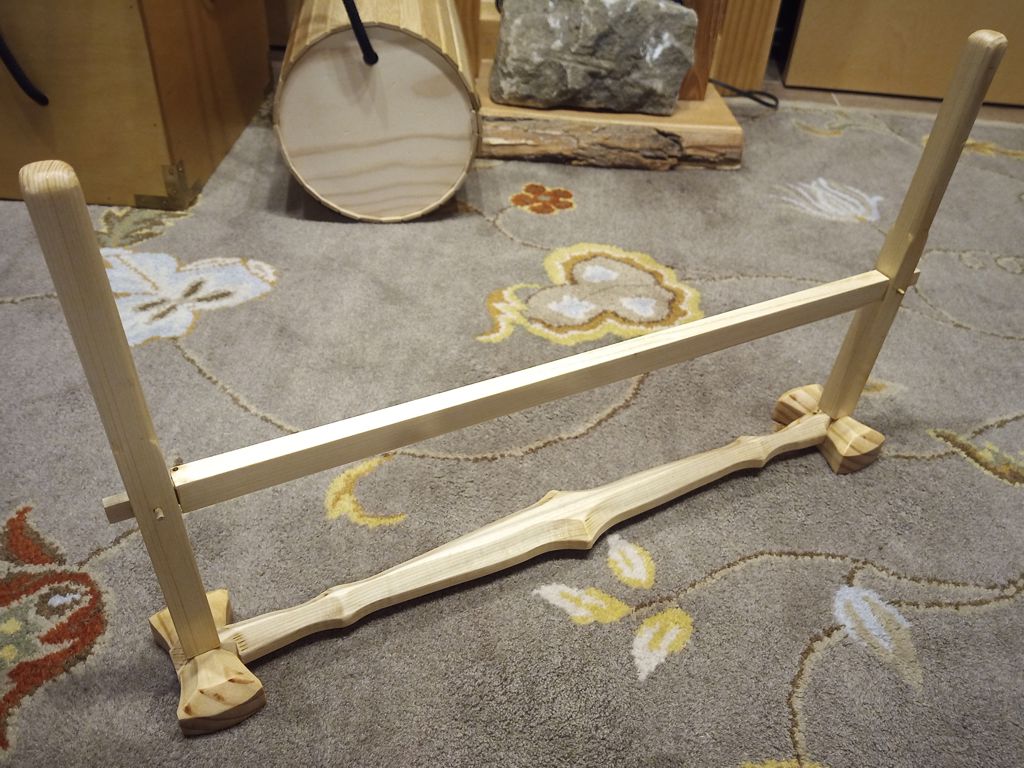A while back, a friend and fellow fiber artist asked me if I could make a tabletop-sized “Oseberg Loom” that she could use in displays and demonstrations. An Oseberg Loom is a medieval style of loom for weaving narrow bands, and it is often used for tablet weaving (aka: card weaving). My friend is an experienced and enthusiastic tablet weaver who often displays work at SCA events.
I started looking around on the Internet, and found that a “real” Oseberg loom is about 2 meters long and about a meter tall. (Thanks, Ulf!) Now I understood why my friend wanted a “mini” version. Drawings enabled me to scale the pieces down, and get to work in wood.
My completed mini-loom is about 21 inches long and 12 inches tall. It is made of pine, with a blonde shellac finish. The feet join to the horizontal beam with dovetails, the stretcher bar joins to the verticals with a pinned through-mortise, and the verticals attach to the base with long screws. I thought about using more joinery, but I realized that screws would be more rigid, more durable, and much easier. The screws also make it possible to disassemble the loom if necessary for travel or repairs. There is no glue, though the shellac may of course make the pieces stick to each other..
I was able to do almost all of the cutting on the band saw, except for some of the detail work. The beveling on the base pieces (and the rounding on the verticals) was done using a router. I have a small router table that uses a handheld trim router, which is very handy for this kind of small project. The through mortises were drilled and then squared up with a chisel.


